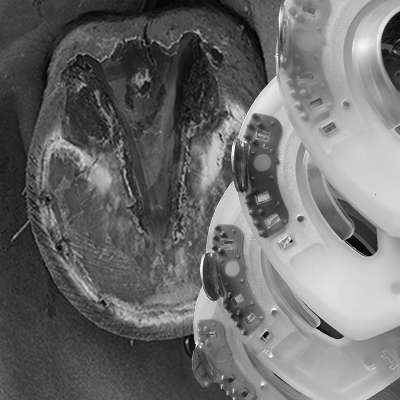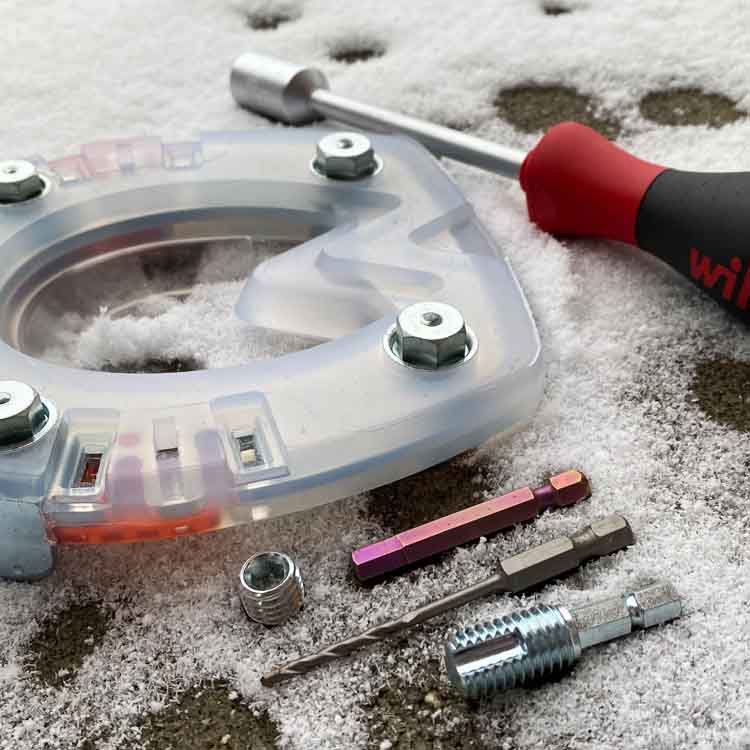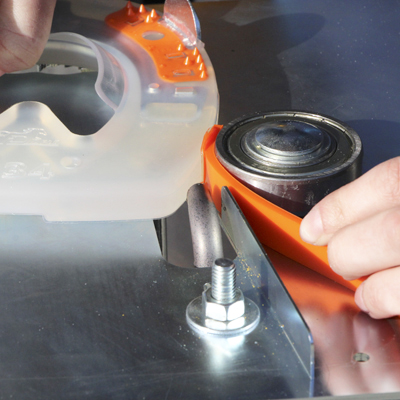Shoeing Instructions and Application Guidelines
Every product is only as good as its user. That's why it's important for us to provide you with all the relevant information regarding the application of our urethane and composite horseshoes, as well as the appropriate accessories.
The correct application of our composite and urethane horseshoes is straightforward if you have the necessary knowledge and skills for proper nailing, riveting, or gluing of the shoes and pay attention to certain aspects. Here are some basic guidelines for you. However, we still recommend attending a relevant course because, especially in the field of horseshoeing, theory, in our opinion, will never fully replace practical experience.
Please note our safety instructions for all work involving our products.
In most cases, in addition to the written instructions, there is also a shoeing video or assembly video for better illustration. If you generally prefer videos, why not also take a look at the FAQ → Video section on our website?
Your Personal Testimonial - Help Other Riders and Farriers
At this point, we've provided you with the "general" information. However, when it comes to hooves and horses, there are often shades of gray, and years of practice and individual hoof situations often present farriers on-site with various challenges. If you'd like to assist other riders in finding the optimal horseshoe for their horse, or if you want to share tricky cases with other farriers, please share your experiences with our products. Simply send your text and photos via email to our team; we look forward to it! For data protection reasons, we do require a signed statement confirming your consent to the publication of your experience report.
Horseshoeing with Urethane and Composite Horseshoes
Our composite horseshoes are suitable for both nailed and glued applications. We also offer a system for cast shoes. The pure urethane shoes, originally developed to renew the profile of worn -out hoof boots, are now also commonly used as glue-on shoes.
Regardless of the type of shoeing and model you choose for your horse, the crucial aspect is selecting the right size and ensuring optimal fitting to the horse's hoof.
The Right Model and Fitting to the Horse's Hoof
What Kind of Hoof Protection Does Your Horse Need? Equipment & Applications Briefly Explained
 Basic Knowledge
Basic Knowledge
Types of Shoeing — Glue-on Horseshoes, Nail-on Horseshoes, and Cast Shoe
Enhanced Grip for Your Composite Horseshoe or Pure Urethane Horseshoe
The plastic coating of our composite horseshoes provides your horse with a certain level of grip due to its material and slightly profiled surface. However, there are situations where additional grip in the form of studs or spikes may be necessary.
Studs for Threaded Straight Bar Composite Horseshoes: Ideal for Jumping and Eventing
 View
Instructions
View
Instructions
Additional Equipment and Larger Modifications for Optimal Hoof Protection
Alongside our horseshoes, we offer a comprehensive range of compatible accessories. Our aim is to support you and your horse even when standard shoe sizes don't quite fit or when the hoof requires special support, for example, through a wedge shoe.
Color Strips - Colored Accents on the Hoof and Minimal Adjustment of the Length and/or Width of the Horseshoe
 View
Instructions
View
Instructions
 Germany
Germany








